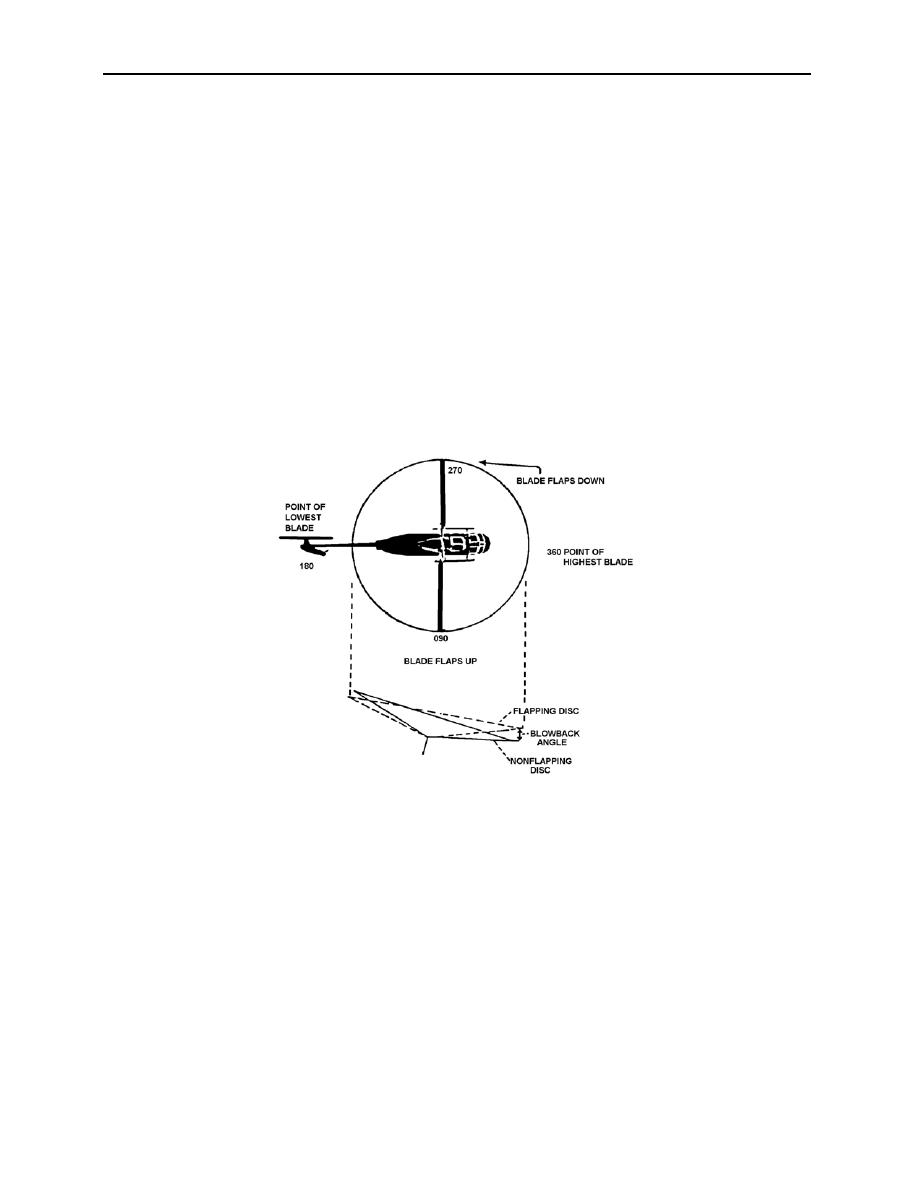 |
|||
|
|
|||
|
|
|||
| ||||||||||
|
|  HELICOPTER AERODYNAMICS WORKBOOK
CHAPTER 3
PHASE LAG
The advancing blade will encounter its highest rotational speed 90 prior to a position over
the nose of the aircraft, but does not experience the highest degree of flapping at this point
(figure 3-19). In fact, this maximum flapping occurs over the nose, 90 later, due to a principle
of a dynamic system in resonance. A system in resonance receives a periodic excitation force
sympathetic with the natural frequency of the system. The flapping frequency of a centrally
hinged system is equal to the speed of rotation. Therefore, maximum response occurs 90 after
maximum periodic excitation. This is termed phase lag. In order for a helicopter in forward
flight to roll into a left turn, maximum lift must be realized at the right "wing" position and
minimum lift must be realized at the left "wing" position. Therefore, maximum AOA must
occur at the 180 position and minimum AOA must occur at the 360 position. To obtain the
appropriate response 90 after maximum excitation, logic tells us forward cyclic is the
appropriate input to initiate a left turn. No wonder helicopters are such a challenge to fly! Well,
they are challenging, but not for this reason. Inputs are translated 90 prior mechanically, thanks
to some design engineers who had a little foresight.
Figure 3-19
BLOWBACK
Let's get back to dissymmetry of lift. As the aircraft moves forward, the advancing blade
"sees" a higher airspeed, and the resultant dissymmetry of lift causes the blades to flap to a
maximum 90 later due to phase lag. This extra lift generated over the nose causes the nose to
pitch up. Conversely, the nose will tend to pitch down as the aircraft decelerates. The combined
effect of dissymmetry of lift and reduced induced velocity defines this transition to a more efficient
flight regime, called translational lift. The pitch-up tendency of the aircraft as it accelerates and
the pitch-down tendency as it decelerates are known as rotor blowback (figure 3-20).
HELICOPTER POWERED FLIGHT ANALYSIS 3-17
|
|
Privacy Statement - Press Release - Copyright Information. - Contact Us |